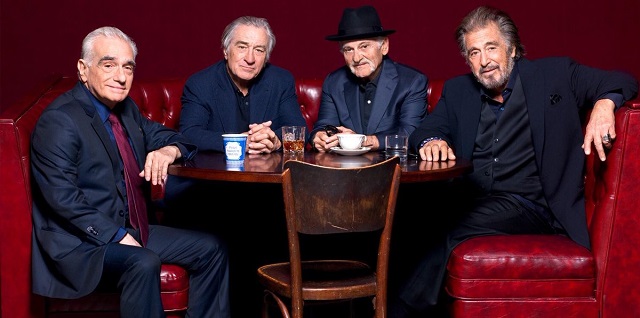Review by Anna and Maria Sciacca
From Charles Brandt’s book “I heard you paint houses”, whereas “house painter” is a mob slang expression for a killer, director Martin Scorsese realizes the movie “The Irishman”. Narrated in a series of flash-backs and flash-forwards, “The Irishman” is an emotional and raw story of organized crime in America from the 1950s to 2000. Frank Sheeran (Robert De Niro) a truck driver known as the Irishman among Philadelphia gangsters, starts with small jobs, becoming a hitman and committing crimes for the Italian-American boss Russell Bufalino (Joe Pesci). Sheeran didn’t know well the mafia environment like some Italians who came out of places like Brooklyn, Chicago, and Detroit, a world where loyalty and respect are very important rules.
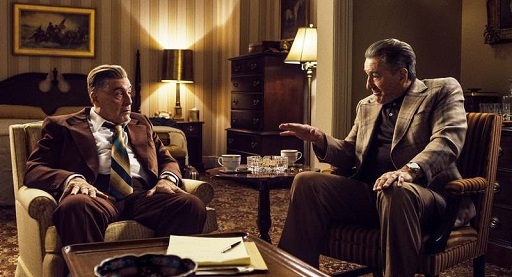
When Bufalino introduces Frank Sheeran to the Teamsters, Sheeran begins to work in The International Brotherhood of Teamsters for the Founder and President Jimmy Hoffa (Al Pacino). In 1967, Hoffa goes to prison for illegal activities, for jury tampering, attempted bribery and fraud, then after some years he’s released from prison. When in 1975 Hoffa disappears from a restaurant parking, there aren’t news of what it has happened to him until when, after many investigations and interviews, policemen catch the mobster boss Russell Bufalino who, hiding behind a legal activity in the garment manufacturing industry, is involved in the rackets of gambling, extortion, and robbery. Sheeran, who had business with Bufalino, is accused of a series of murders. Investigated by FBI after many years spent in the most famous prisons of United States, in the seventies Frank meets his lawyer and private detective Charles Brandt, revealing his responsibility in Hoffa’s murder. In the movie “The Irishman”, political intrigues, rivalries, ambushes, shootings, and beatings describe the environment of organized crime. In the most classic scenes of a typical gangster movie, there are the convivial meetings between mobsters in a private room or in a secluded corner of a restaurant where they eat a spaghetti dish or a steak with potatoes while they talk about business, associations or acts of revenge that culminate in explosive shootings, like in the scene at Umberto’s Clam House in Little Italy and at a barbershop.
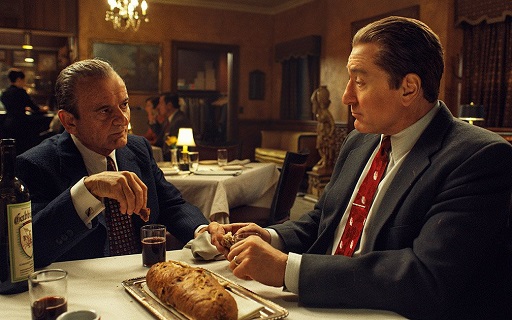
In “The Irishman” there are moments of friendship alternate with bursts of violence. We see Joe Pesci and Robert De Niro talk in Italian while they are enjoying a piece of good rustic bread with a glass of wine at a table of an elegant Italian restaurant and the scene with Robert De Niro who goes into a grocery store dragging and beating a grocer from behind the counter and out of the shop to the sidewalk. I
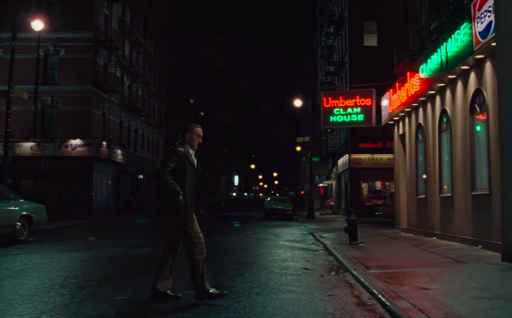
n the brilliant performances of Robert De Niro, Al Pacino, Joe Pesci, Harvey Keitel, Ray Romano, Bobby Cannavale, “The Irishman” is an intimate and nostalgic tale of feelings and conflicts that go through life and the search of redemption. We find night scenes are always fascinating in a movie, like that in which Robert De Niro is crossing a wide road at night under the lights of the restaurant Villa di Roma. Produced by Netflix, the film presents many locations filmed in New York and in the surroundings, through the pleasant atmosphere of vintage songs of a “Doo Wop” style, which represents an era.
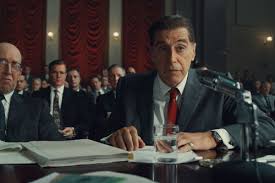 Through footages, news, and interviews, Martin Scorsese has brought on the big screen, with “The Irishman”, a work of cinematographic art in the history of Italian-American organized crime. After debuting at New York Film Festival and Roma Film Fest, the movie is screened at cinemas and theaters, but it can be also viewed on the streaming platform Netflix.
Through footages, news, and interviews, Martin Scorsese has brought on the big screen, with “The Irishman”, a work of cinematographic art in the history of Italian-American organized crime. After debuting at New York Film Festival and Roma Film Fest, the movie is screened at cinemas and theaters, but it can be also viewed on the streaming platform Netflix.


